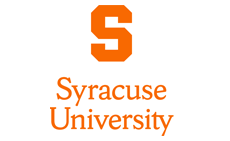The Role of Rab11 or Rab8-associated Membranes During Kupffer's Vesicle (KV) Lumen Formation in Vivo
Date of Award
Winter 12-22-2021
Degree Type
Thesis
Degree Name
Master of Science (MS)
Department
Biology
Advisor(s)
Hehnly, Heidi
Subject Categories
Biology | Life Sciences
Abstract
In early embryonic development, cells undergo a series of shape changes called tissue morphogenesis by which tissues develop into an organ. One mechanism that is potentially vital to tissue morphogenesis is abscission, the cleavage of the cytokinetic bridge. Our lab has proposed that abscission is required for tissue morphogenesis in vivo, specifically in the zebrafish left-right organizer, Kupffer's vesicle (KV). The Hehnly Lab's testable model for KV morphogenesis is that a population of cells, some in cytokinesis, group together in a pre-rosette structure and then self-assemble to form a rosette-structure where cells orient their cytokinetic bridges toward the rosette center. This rosette transitions into a sphere of cells surrounding a fluid-filled lumen upon cleavage of cytokinetic bridges. One molecular component that regulates cytokinetic bridge severing is the small GTPase Rab11 and its associated membranes, recycling endosomes, which also houses another GTPase, Rab8. I experimentally tested the role of Rab11 or Rab8-associated membranes in KV rosette to cyst transition (lumen formation) in vivo. To identify changes in KV lumen formation, we utilized a CIB1-CRY2 optogenetic system to acutely disrupt Rab11 or Rab8-associated membranes during KV development. I found that optogenetically clustering Rab11-associated membranes resulted in the inability to form a lumen. In the process of doing these studies, I demonstrated that the constriction ring, a required structure for epiboly completion, and KV lumen formation are coordinated. Strikingly, the coordinated timing between the two is uncoupled under Rab11 or Rab8 clustering conditions. This research is among the first studies to systematically track and analyze KV lumen formation as well as the constriction ring throughout the entire duration of KV development.
Access
Open Access
Recommended Citation
Ingram, Eric, "The Role of Rab11 or Rab8-associated Membranes During Kupffer's Vesicle (KV) Lumen Formation in Vivo" (2021). Theses - ALL. 591.
https://surface.syr.edu/thesis/591


